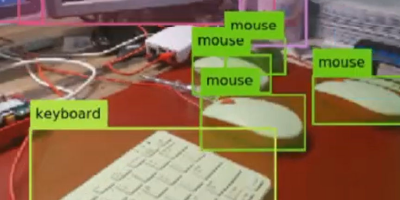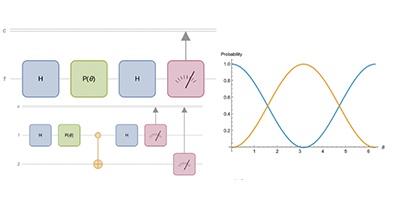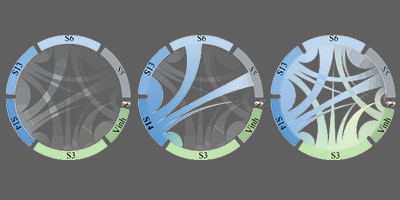Wolfram Community Takes on Current Events: COVID-19 Data, Green Spaces, Homeschool Puzzles and More

This roundup of Wolfram Community contributions features several different functions and tools related to current times, from the global pandemic to sustainable spaces and homeschool puzzles. Read on to see just a few creative examples from some of our favorite Community members and Wolfram Language wizzes.
Epidemiological Models for Influenza and COVID-19
Robert Nachbar

Robert Nachbar takes an in-depth look at how compartmental models of epidemiology can be used to study the spread of a contagious disease. He has provided a very detailed pedagogical approach, starting from a simple influenza example and then extending it to the COVID-19 outbreak. This post also has a follow-up, Stochastic Epidemiology Models with Applications to COVID-19, to include the inherent randomness of events into the modeling.
For more coronavirus resources and updates, visit this collection of contributions.
Fun with Perspective Anamorphism: A Coke Can, a Coffee Cup and Lady Liberty
Erik Mahieu
Using a few different functions, Erik Mahieu explains the popular art concept of perspective anamorphism and has some fun with examples featuring—you guessed it—a Coke can, a coffee mug and the Statue of Liberty. We also get an interesting history lesson on World War I–era “living photographs” made by Arthur Mole, who used thousands of people to recreate various images.
Visualizing the Unified Geologic Map of the Moon from the USGS
Jeff Bryant

Jeff Bryant discusses how to import the newly published data on lunar geology from the United States Geological Survey (USGS) and combine it with the GeoGraphics functionality in the Wolfram Language. This labeled data mainly covers geological ages for the Moon, and Jeff explains how to project this data onto a sphere to construct a 3D texture map of the Moon. He then discusses how this sphere can be moved around the equator to create an animation that can be directly embedded in a Wolfram Notebook.
How Black Holes and Accretion Disks around Them Actually Look
Jingxian Wang

You may have seen the weird shape of the black hole Gargantua and its accretion disk in the movie Interstellar (shown in the first of the two previous images). But does the film really get the science right? Jingxian Wang discusses this issue and shows that movie creators only got the outline of the accretion disk right (which can be considered good science for a Hollywood movie). He tried to render an accretion disk around a Schwarzschild black hole and generated the corresponding shapes (shown in the second of the two images).
Population Density Map
Mads Bahrami

This entry discusses how to create a population density map with a desired shape and size of grid tile for any country using publicly accessible datasets and the Wolfram Language. The code proves useful in studying the spread of disease, such as COVID-19, and can be generated using small datasets (like Qatar, shown here) or larger datasets from the Humanitarian Data Exchange (HDX).
GreenUP Green Space Detector
Jessica Shi, Anwesha Das, Aranyo Ray and Claire Morton

Wolfram Summer Camp participant Jessica Shi shares a project that she and her teammates created using the Wolfram Language to map and grade green spaces in local communities. This tool was built by four then-high-school students from the US and India and entered earlier this year in the sustainability-themed Hack the Helyx Hackathon. The students were able to expand their project into an interactive website where you can check out the green space in your own area.
Elliptic Curve Integrated Encryption Scheme
Dariia Porechna
Join Dariia Porechna and cryptography favorites Alice and Bob in exploring a hybrid encryption scheme based on the idea of combining asymmetric elliptic curve security with symmetric encryption. By using the Wolfram Language, Dariia explains how two parties can compute the same secret key without having to ever share or expose it to unprotected channels of communication.
Cryptograms for Homeschoolers
Todd Rowland

A great tool for teachers and students alike, these cryptograms can be created with and without the answers immediately revealed. Todd Rowland gives examples of different types of cipher-based puzzles and how they can be generated and solved using the Wolfram Language. Check out his code for customizable puzzle learning or as preparation for entering the world of programming!
3D Modeling of the SARS-CoV-2 Virus in the Wolfram Language
Jeff Bryant

In a different but interesting look at the current pandemic, Jeff Bryant explains that although SARS-CoV-2 (severe acute respiratory syndrome coronavirus 2) is tiny, modeling the virus from its constituent molecules is a task that can be tackled. Jeff shows us step by step how to model the virus in various ways, including as a 3D cross-section and sample with color-coded internal structures.
The Cuckoo’s Egg and the Cosmological Theorem
Henry Jaspars

In a tribute to the late English mathematician John Horton Conway, contributor Henry Jaspars walks us through a colorful representation of the audioactive (or Cuckoo’s Egg) sequence using a numerical riddle. The entry continues with Conway’s constant and cosmological theorem, which is the idea that long sequences, called elements, will decompose into other elements.
TraCOV: Personalized COVID-19 Risk Analysis Tool
Jessica Shi, Anwesha Das, Aranyo Ray and Claire Morton

This team of high-school students designed, coded and presented the TraCOV tool in an impressive 24 hours. Using the Wolfram Language, they created a web application that individuals can use to measure their risk levels of contracting coronavirus. The tool takes into account factors like age, location, gender and preexisting conditions.
Get Inspired
If these snippets interest you and you haven’t joined Wolfram Community, now is the time! You can discover a wealth of tools and code using the Wolfram Language, submit your own content or read through the complete list of Staff Picks.
| Want to get information about similar Wolfram Community posts delivered straight to your inbox? Subscribe to the Wolfram Community Insider here. |



Comments